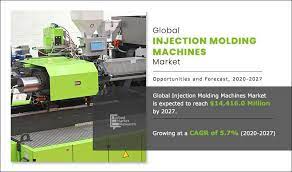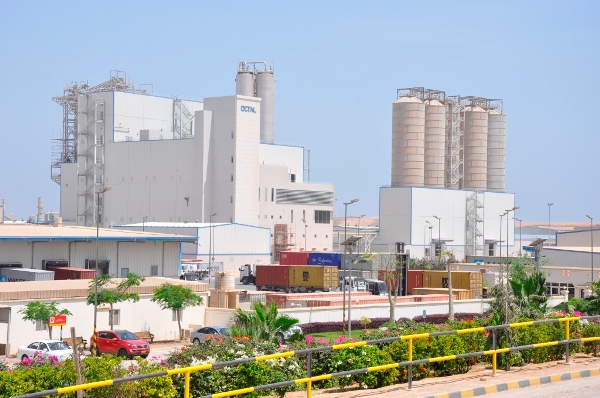
Global competitiveness hinges on adding greater value for customers, and adding that value involves knowing where your customers’ challenges lie, then being innovative in creating solutions. That’s what true value-added means. It takes a company with visionary management and the willingness to invest in products and services that will not only bring value to customers but result in greater growth and profitability for the supplier.
R&D/Leverage is one of those companies. While it is a major tooling supplier for the PET bottle market globally, the company has gone above and beyond to understand its customers’ needs. It provides more than just molds, including expertise in consumer intelligence, product design, and more to offer customers a holistic approach to integrated packaging solutions.
Recently the company introduced its next new value-add product, Opti-Sim Virtual Prototyping, which allows PET packaging manufacturers to anticipate a bottle concept’s impact on engineering, operations, and marketing. With 35 years of PET packaging experience, R&D/Leverage knows something about how brand owners create and develop new packaging, and why packaging is key to the success of the product.
Jeff Chen, senior research engineer for R&D/Leverage, explained in an interview with PlasticsToday, what that means to R&D and its customers in the PET packaging market. “We do a lot of tooling for customers, and when they know what they want we build it,” he says. “However, we’re often asked about the performance of the PET bottle.”
Because the company builds molds for bottles that require extensive customization, an application had to be developed specifically to meet a product’s performance requirements.
To research PET bottle performance, R&D/Leverage would typically do a single-cavity pilot mold, then send the bottles to the QA lab for testing to determine if the bottles meet the customer’s specifications. “This requires a longer lead time and higher cost,” Chen notes. “Sometimes the actual test can only get you so far because it’s not feasible to do an infinite number of prototyping trials.”
To help reduce the cost of pilot molds, speed time-to-market, and optimize sustainability by providing a better method for testing design iterations and bottle performance, R&D/Leverage first purchased a high-end FEA software package. Chen developed the customized Opti-Sim virtual testing program from that to address specifically the requirements of R&D/Leverage’s PET bottle customers and brand owners.
Chen added that Opti-Sim is another tool R&D/Leverage uses to do predictive analysis of the bottle. “We do have extensive knowledge of the actual bottle because we’ve been doing this for many years,” he says. “We have the historical data, now we added Opti-Sim to make us even more reliable and valuable to our customers.”
Dave Brunson, VP of engineering for R&D/Leverage, tells PlasticsToday that, “Opti-Sim lets our customers test before they invest,” adding that many times “when the customer is ready to move forward with a particular design, they’re not sure how it will perform.
With regard to bottles, there are usually three specifications: The dimensional spec or the size of the bottle, the volumetric spec or how much volume the bottle will hold, and the physical performance spec or how strong the bottle is in various tests.”
Opti-Sim helps R&D/Leverage’s engineering team address the physical specifications required. “The others are straightforward engineering design specs,” Brunson added. “The difficulty comes when trying to project physical specs such as top load and vacuum load. Once the empty bottles are delivered at the fill line they go through a number of processes including filling, labeling, capping, and stacking in the trucks and warehouse. Throughout the whole supply chain some of the more critical factors can be top-load strength, drop impact resistance, and vacuum performance.”
The way the process typically works is that the brand owners enlist a concept design house that might design 50-100 different sketches. “The problem with that is that many times these designs have no way of being manufactured,” Brunson explains. “But those ideas go to the brand owners and they’ll pick two or three designs, which they send to the converter and then comes to us for a quote. We look at the design and determine that this particular design can’t be made because of this or that feature. Sometimes we go back and forth numerous times, and that eats up months.”
R&D/Leverage’s creative design studio, however, works primarily with brand owners rather than bottle converters. “By working directly with the brand owners we synchronize the creative piece of the process with the technical knowledge,” says Brunson. “We know what can be manufactured and that knowledge cuts out the extraneous, time-consuming back-and-forth. With Opti-Sim we can engineer the physical properties of the package.”
Relying on the experience of its team, R&D/Leverage is able to know what design should provide the highest top load based on the shape and wall thickness of the bottle. “Now we can verify that by using Opti-Sim,” Brunson says. “At that point, we can go back to the brand owner and tell them with greater confidence what will work best.”
The geometry of the bottle and the wall thickness controls the physical properties. “With the Opti-Sim, we can predict properties like the top load and vacuum load so we know we’re within a range of performance required with the lightest weight, which also allows material savings, “Brunson adds.
For example, the Opti-Sim virtual testing might reveal that a design which requires 100 lb of top-load strength was requested at a weight that would yield 150 lb of top-load strength, so with these results a lighter weight or a geometry change to a more preferred design could be recommended.
“To know all of this information up front and have it engineered into the packaging before you go to hard tooling is a true cost and time savings. It helps us can get as close as possible to the actual requirements of the bottle, and reduce the amount of hard tooling you need by doing it in the software,” Brunson says.
Chen added, “Opti-Sim represents yet another way that customers in the PET packaging space can benefit from our expertise—in this case, to pre-determine how their bottle concepts will impact all their existing systems, quickly and accurately.”
SOURCE : http://www.plasticstoday.com/articles/rd-leverage-innovation-creates-value-08172012b









